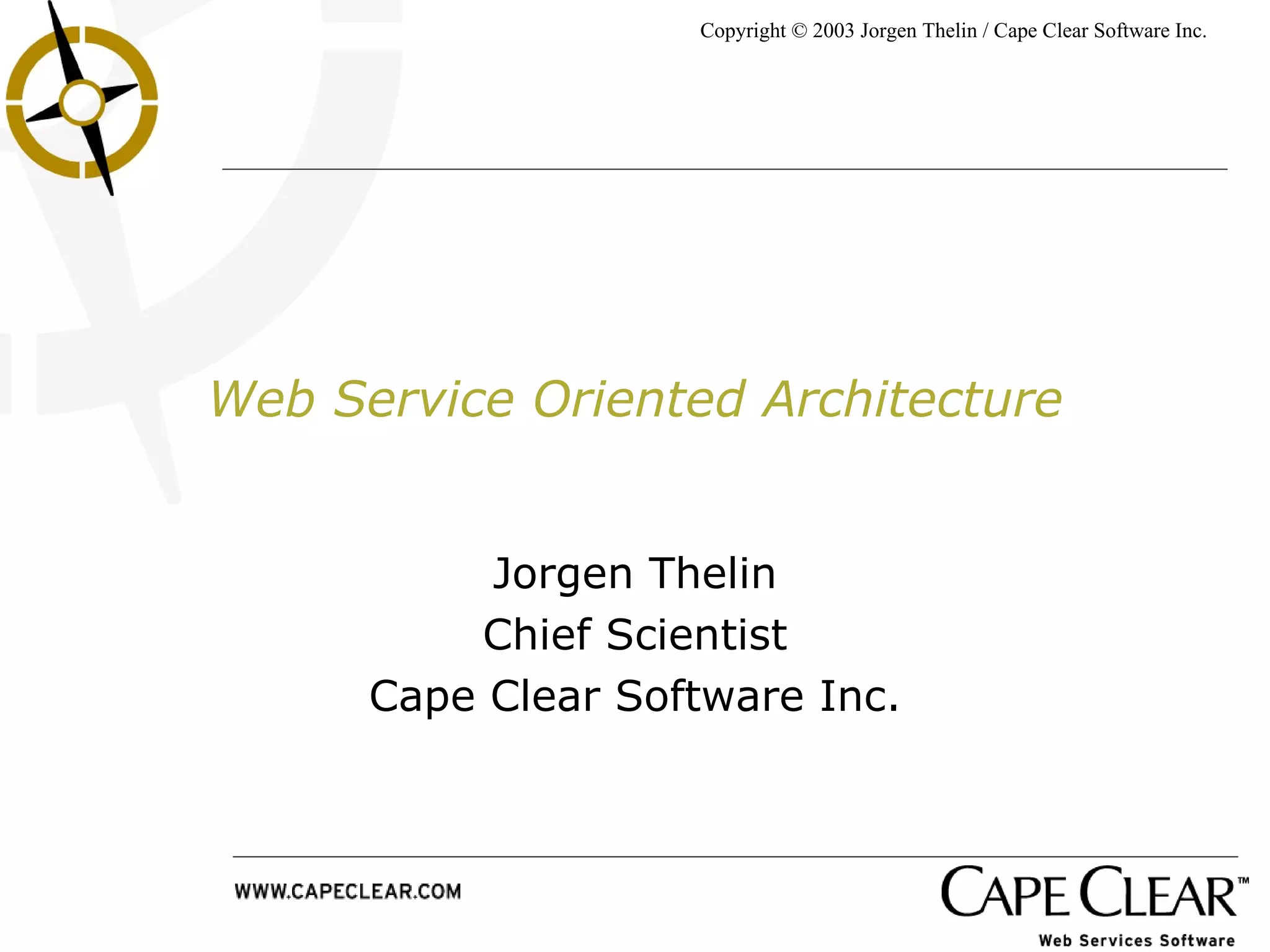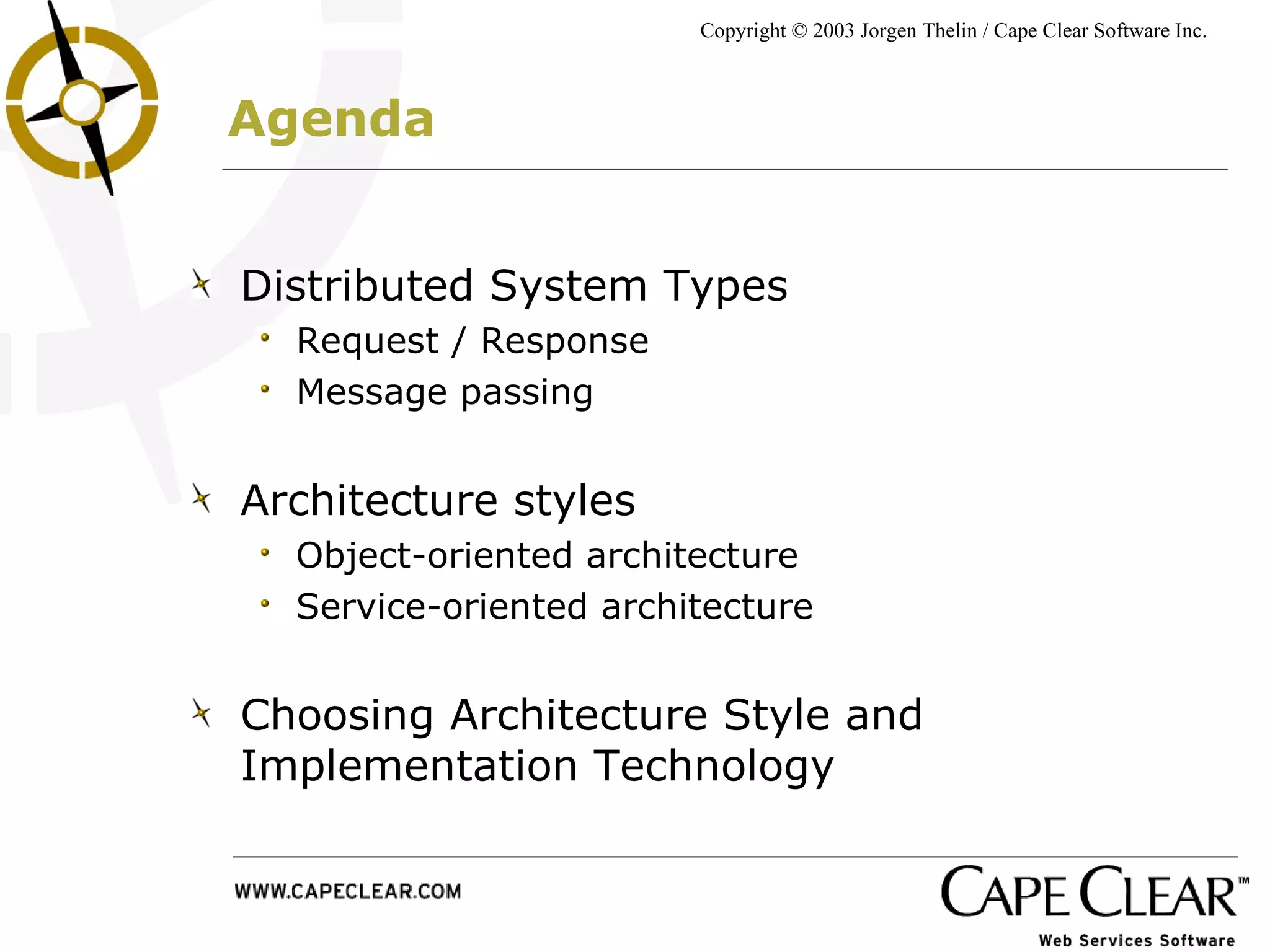There are two main types of distributed systems: request/response and message passing. Request/response systems focus on invoking operations and return values, while message passing focuses on constructing and dispatching messages without expecting a response. There are also two main architecture styles: object-oriented and service-oriented. Object-oriented styles involve communicating with object instances and have stateful communications, while service-oriented styles involve communicating with services through a standardized interface in a stateless manner. A shift is occurring from object-oriented to service-oriented architectures, as the latter allows for looser coupling and better scalability through messages. Web services can support both request/response and message passing systems.












![What Makes a Good [Web] Service? John McDowall comments in his weblog: There is a lot of confusion about what is a good service - it is not an object, it is not a component, it is an interface that provides a business service . A good heuristic is: If the service cannot be described such that a business person understands the value - go back to the drawing board! [ John McDowall, CTO, Grand Central ] http://www.mcdowall.com/webservices/2003_02_11_archive.html#90307530](https://image.slidesharecdn.com/wsoa-1227239641955142-8/75/Web-Service-Oriented-Architecture-13-2048.jpg)







